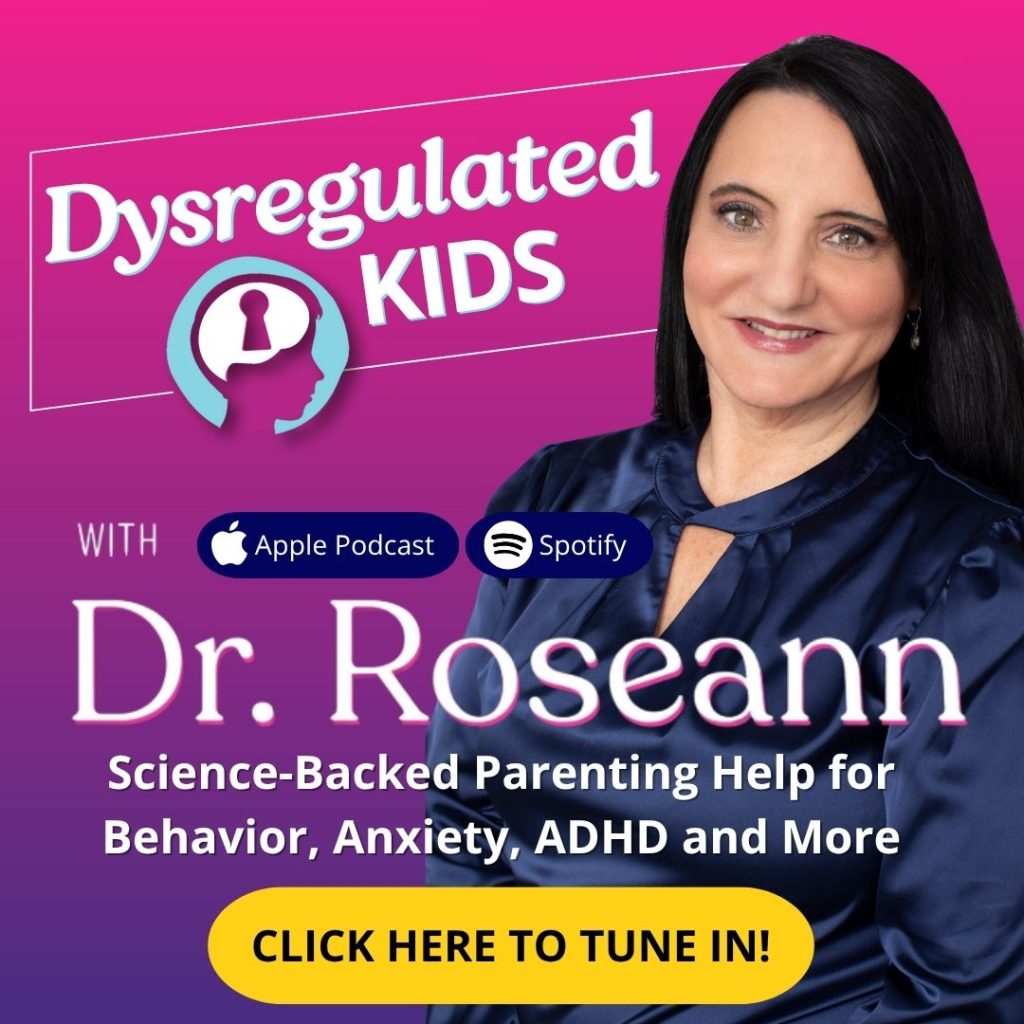Estimated reading time: 8 minutes
If you’ve been wondering how to discipline a child with ADHD without constant battles, tears, or guilt—you’re not alone.
Every day, I hear from parents who whisper, “Nothing works,” “He’s so smart but can’t control himself,” or “I feel like I’m failing.” The truth? You’re not failing—and your child isn’t broken.
What you’re seeing isn’t bad behavior. It’s a dysregulated brain asking for help.
Calm the brain first. Discipline is less about punishment and more about teaching calm, connection, and self-control. That’s the foundation of Regulation First Parenting™—because when the brain feels safe, kids can listen, learn, and grow.
In this guide, you’ll learn:
- Why traditional discipline backfires with ADHD brains
- How to calm the brain before correcting behavior
- What rules actually stick when focus and impulse control are tough
- How to design a 10-minute ADHD behavior plan that builds confidence, not conflict
- And how your whole family can thrive—not just survive—while living with ADHD
Why Do Typical Discipline Tactics Backfire With ADHD Brains?
Traditional punishments assume kids can access logic under stress. Many ADHD brains are dysregulated, so reasoning during a blow-up is like teaching swimming during a flood.
Behavior is communication. It tells us the nervous system needs help first.
Fresh Takeaways:
- ADHD discipline strategies should teach skills (impulse control, flexibility), not create fear.
- Connection is the delivery system for correction. That’s co-regulation—your calm regulates theirs (Bornstein & Esposito, 2023).
Parent snapshot (Riza & Sam, 9):
Mornings felt like defiance. Once Riza used a picture checklist and a quiet voice, Sam moved through the steps faster. The “defiance” was a distraction. Takeaway: Match support to the brain, not the behavior label.

How to Calm the Brain Before Correcting the Behavior
You can’t teach a dysregulated brain. Let’s calm the brain first. Then guide behavior.
Co-regulation in action:
- Lower your voice and pace. Slow = safe.
- Name and normalize. “Big feelings. I’m here.”
- Offer sensory regulation. Wall push-ups, cold splash, rocking, or a short walk.
- Then script the next step. “When your breath is smooth, we’ll reset the timer.”
Co-regulation works on both the body and behavior—it helps the brain learn when it feels safe (Bornstein & Esposito, 2023).
“You can’t teach a dysregulated brain.” — Bruce D. Perry, MD, PhD
What House Rules Actually Work When Attention Is Slippery?
Keep rules few, clear, and visual. That reduces cognitive load and fights “What was I supposed to do?” fatigue.
Build ADHD-Friendly Rules
- Co-create 3–5 rules with your child.
- Say what to do (“Use indoor voice”) instead of what not to do.
- Post where needed (bathroom mirror, backpack).
- Link to natural consequences (see below).
Rules That Stick:
| Rule Principle | Why ADHD Brains Benefit | Example |
|---|---|---|
| Keep it short | Less working-memory demand | “Feet on floor.” |
| Make it visible | Visuals beat lectures | Morning picture chart |
| Tie to real life | Natural consequences teach | “Forgot homework → email teacher plan” |
| Repeat calmly | Consistency = safety | Same script, same tone |
So… How to Discipline a Child With ADHD When Nothing Works?
Shift from punishment to positive discipline for ADHD. Teach, coach, and reinforce.
What to Use
- Positive reinforcement for effort, not perfection.
- Natural consequences (ADHD-friendly) connected to behavior.
- Micro-routines for hot spots (bedtime, transitions).
- Impulse control coaching: pause words, breathing cues, and “do-over” moments.
- ADHD routines with timers, checklists, and previewing “what’s next.”
The science behind skills-first: Parent training + executive-function training improved inattention and behavior regulation in an RCT. Parents reported less distress too (Chu et al., 2022).
A 10-Minute Behavior Plan You Can Stick To
Keep it simple. Post it. Practice it.
Your 5-Step ADHD Behavior Plan
- One target (e.g., “start homework within 5 minutes”).
- Clear cue (timer + visual checklist).
- Rehearse the routine when calm (30 seconds).
- Reward small wins (points, choices, extra play).
- Review weekly; adjust one thing at a time.
Why exercise belongs in the plan:
A 12-week aerobic + neurocognitive exercise program improved executive function and sleep in children with ADHD. And benefits lasted at least 12 weeks (Liang et al., 2022). Better EF = smoother behavior.
Parent snapshot (Lisa & Ava, 7):
Ava earned a sticker whenever she used her “calm start” routine. Two weeks later, ADHD meltdowns dropped, and homework started faster. Takeaway: Celebrate progress, not perfection.

How to Keep Mornings and Homework From Blowing Up
Pick the pain point. Engineer it.
Mornings
- Prep the night before. Clothes, backpack, breakfast choices.
- “2-timer method”: one to start, one to finish.
- Parenting ADHD without yelling: whisper-voice + one-step asks.
Homework
- Snack + 10 minutes of movement first.
- Breaks every 10–15 minutes. Use a visual tracker.
- ADHD behavior plan: define “done” with a picture checklist.
“When children feel safe and connected, they’re far more likely to accept guidance and boundaries.” — Tina Payne Bryson, PhD
Parent snapshot (Miguel, 11):
Switching to a “start-line routine” (timer + first 5 problems) ended the daily standoff. Takeaway: Predictability reduces negotiation.
How to Get Co-Parents and Teachers on the Same Page—Fast
Consistency is a nervous-system gift. Agree on 2–3 shared strategies and scripts.
Fast Alignment Kit
- One script for redirections. Example: “Pause. Breathe. Let’s try that again.”
- One reward system that travels (same points at home/school).
- Weekly 10-minute check-in to tweak supports.
- Share a one-page plan with the teacher: target, cues, rewards, and meltdown plan.
We’re Living With Adhd… How Can the Whole Family Thrive?
When a family embraces the neurodivergent brain—and stops personalizing symptoms—everyone gets calmer.
Success rests on structure, clear communication, balanced responsibilities, and celebrating strengths.
Routines for meals, sleep, and movement help ADHD partners and kids stay on track. Visual schedules and face-to-face check-ins prevent resentment and missed cues.
Celebrate hyperfocus, creativity, and energy as assets while teaching regulation and follow-through.
Do This Together
- Create steady routines for sleep, meals, and activity. Use calendars and visual cues.
- Divide chores by strengths; keep steps small and visible.
- Practice empathy: “It’s not you; it’s how your brain processes.”
- Schedule joy: games, dance breaks, Lego time—connection calms.
Parent snapshot (The Rodriguez family):
Nightly “brain breaks” made evenings gentler for both kids. Takeaway: Regulation is contagious.
“Behavior follows state. Regulate first, then relate, then reason.” — Adapted from Bruce D. Perry, MD, PhD
Ready to Rethink How You Discipline a Child With ADHD?
If you’ve been wondering how to discipline a child with ADHD without the daily frustration, start with calm—not control. A calm brain listens. A safe brain learns.
When your child feels regulated, everything begins to shift—behavior, focus, and confidence.
Each time you breathe first or use a visual cue, you’re teaching the brain what calm feels like. That’s real discipline. That’s brain-based parenting.
Keep going. Celebrate small wins. Progress, not perfection, is what rewires the brain.
You’re helping your child build skills for life—one calm moment at a time.
You’ve got this. And you’re doing better than you think.
FAQs
How do I use natural consequences (ADHD) safely?
Keep it related and teachable. Misused device → device break with a short repair plan. Not unrelated punishments.
What if we try and nothing changes?
Return to regulation. Add movement and sensory tools. Rehearse the routine when calm. Consider co-regulation coaching with a clinician if needed.
Do rewards “bribe” my child?
No. Rewards teach attention to desired behavior and build motivation while skills grow. This is supported by research on parent training and EF supports (Chu et al., 2022).
Should we add exercise?
Yes. Movement boosts executive function and sleep, which lowers behavior blow-ups (Liang et al., 2022).
Terminology
- Co-regulation: Your calm helps their nervous system calm.
- Executive functions: Brain skills for planning, shifting, and working memory.
- Positive discipline: Teaching skills with clarity, routines, and reinforcement—not shame or fear.
Citations
Bornstein, M. H., & Esposito, G. (2023). Coregulation: A multilevel approach via biology and behavior. Children, 10(8), 1323. https://doi.org/10.3390/children10081323
Chu, L., Zhu, P., Ma, C., Pan, L., Shen, L., Wu, D., Wang, Y., & Yu, G. (2022). Effects of combing group executive functioning and online parent training on school-aged children with ADHD: A randomized controlled trial. Frontiers in Pediatrics, 9, 813305. https://doi.org/10.3389/fped.2021.813305
Liang, X., Qiu, H., Wang, P., & Sit, C. H. P. (2022). The impacts of a combined exercise on executive function in children with ADHD: A randomized controlled trial. Scandinavian Journal of Medicine & Science in Sports, 32(S1), 1–16. https://doi.org/10.1111/sms.14192
Always remember… “Calm Brain, Happy Family™”
Disclaimer: This article is not intended to give health advice, and it is recommended to consult with a physician before beginning any new wellness regimen. The effectiveness of diagnosis and treatment varies from patient to patient and condition to condition. Dr. Roseann Capanna-Hodge, LLC, does not guarantee specific results.
Are you looking for SOLUTIONS for your struggling child or teen
Dr. Roseann and her team are all about science-backed solutions, so you are in the right place!
© Roseann Capanna-Hodge










